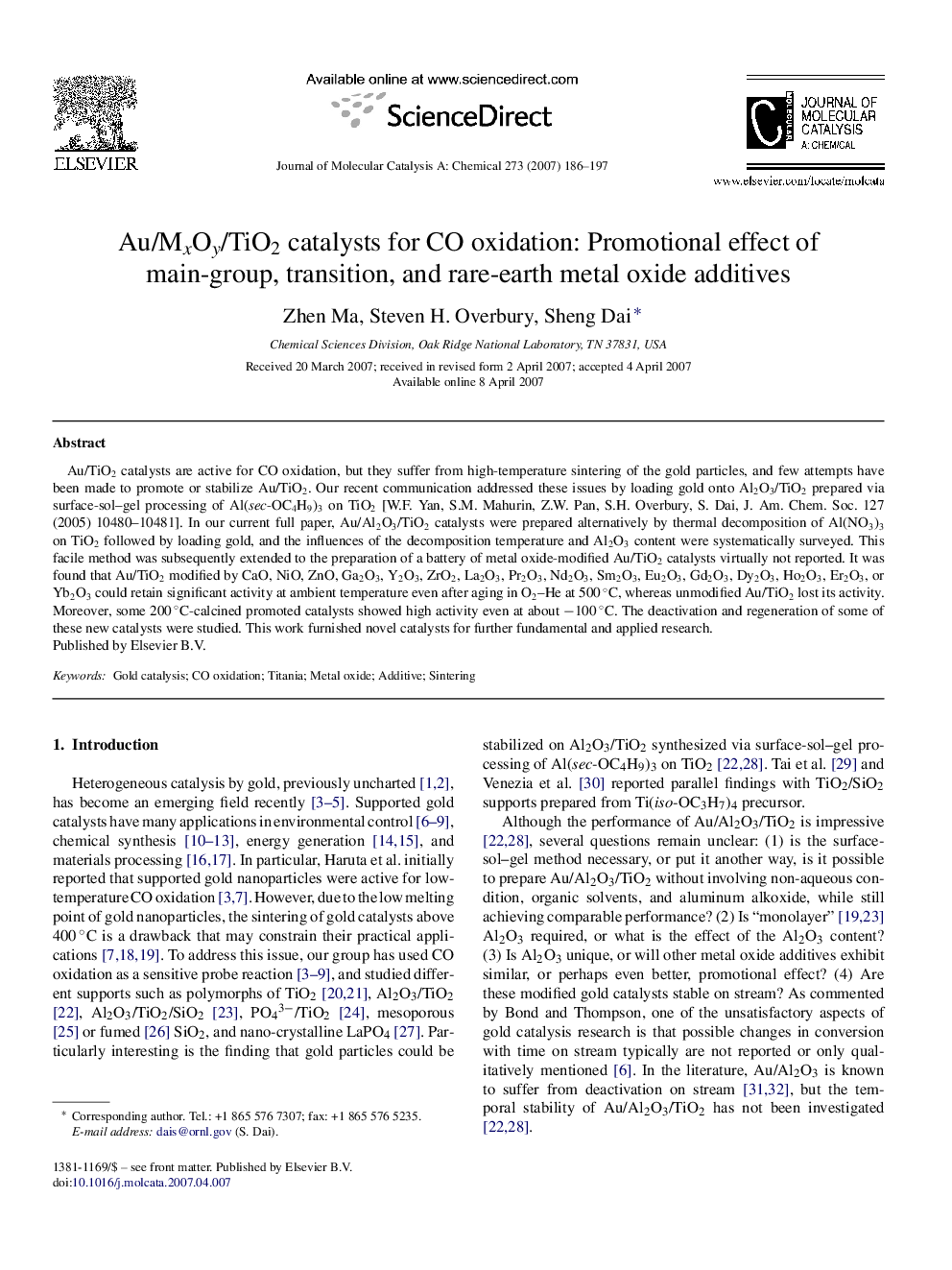| Article ID | Journal | Published Year | Pages | File Type |
|---|---|---|---|---|
| 67891 | Journal of Molecular Catalysis A: Chemical | 2007 | 12 Pages |
Au/TiO2 catalysts are active for CO oxidation, but they suffer from high-temperature sintering of the gold particles, and few attempts have been made to promote or stabilize Au/TiO2. Our recent communication addressed these issues by loading gold onto Al2O3/TiO2 prepared via surface-sol–gel processing of Al(sec-OC4H9)3 on TiO2 [W.F. Yan, S.M. Mahurin, Z.W. Pan, S.H. Overbury, S. Dai, J. Am. Chem. Soc. 127 (2005) 10480–10481]. In our current full paper, Au/Al2O3/TiO2 catalysts were prepared alternatively by thermal decomposition of Al(NO3)3 on TiO2 followed by loading gold, and the influences of the decomposition temperature and Al2O3 content were systematically surveyed. This facile method was subsequently extended to the preparation of a battery of metal oxide-modified Au/TiO2 catalysts virtually not reported. It was found that Au/TiO2 modified by CaO, NiO, ZnO, Ga2O3, Y2O3, ZrO2, La2O3, Pr2O3, Nd2O3, Sm2O3, Eu2O3, Gd2O3, Dy2O3, Ho2O3, Er2O3, or Yb2O3 could retain significant activity at ambient temperature even after aging in O2–He at 500 °C, whereas unmodified Au/TiO2 lost its activity. Moreover, some 200 °C-calcined promoted catalysts showed high activity even at about −100 °C. The deactivation and regeneration of some of these new catalysts were studied. This work furnished novel catalysts for further fundamental and applied research.
Graphical abstractAu/TiO2 is the most studied gold catalyst for CO oxidation, but few attempts have been made to enhance its activity and thermal stability. In this report, we modified the TiO2 support by an array of metal oxide additives followed by loading gold, and found drastic promotional effect caused by certain additives. Figure optionsDownload full-size imageDownload as PowerPoint slide
